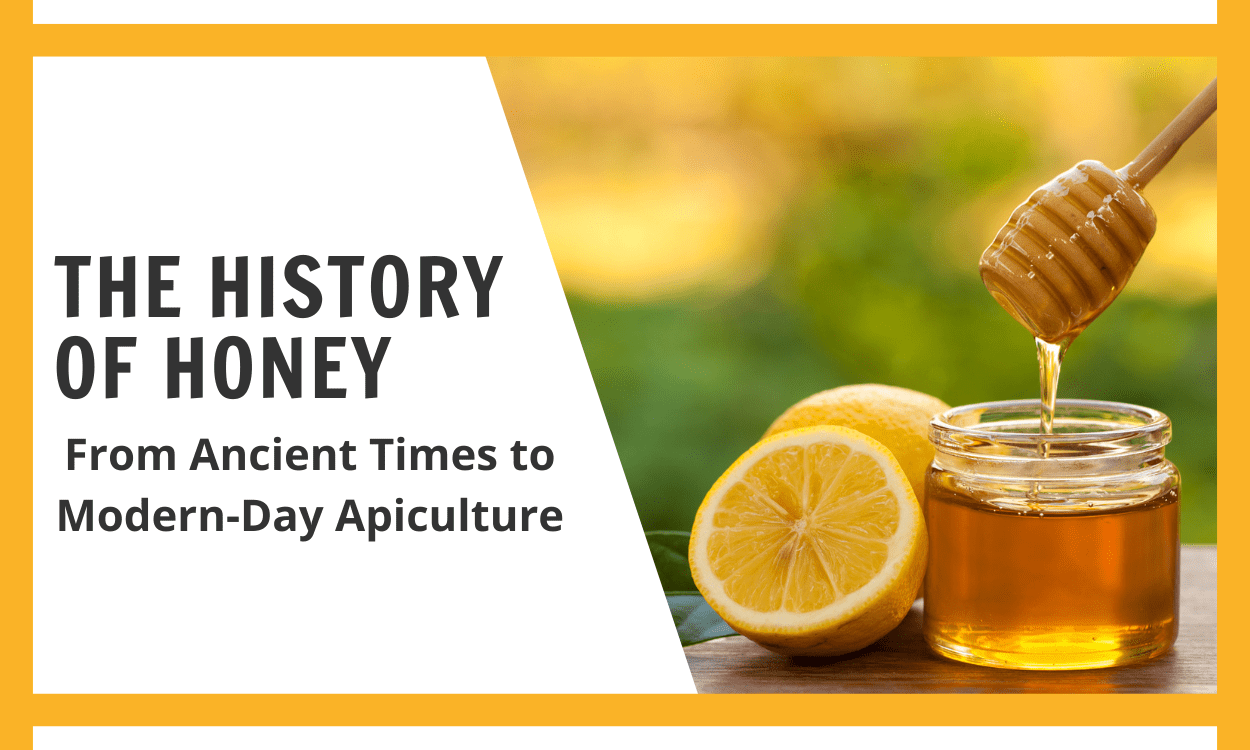

The History of Honey: From Ancient Times to Modern-Day Apiculture
Introduction
Honey, the golden elixir cherished for its sweetness and myriad of benefits, has a history as rich and complex as its flavor. From ancient civilizations to modern-day beekeeping practices, the story of honey spans millennia, weaving through cultures and landscapes. Join us on a journey through time as we explore the fascinating history of honey, from its humble beginnings to its current role in apiculture.
Ancient Beginnings
The story of honey begins thousands of years ago, intertwined with the dawn of human civilization. Archaeological evidence suggests that our ancestors were harvesting honey from wild bees as far back as 8,000 years ago. Ancient rock paintings in Spain depict humans gathering honey from beehives hidden in rocky crevices, providing a glimpse into the early relationship between humans and bees.
The Egyptians, renowned for their advanced agricultural practices, were among the first to domesticate bees for honey production around 2400 BCE. They constructed intricate hives from woven reeds and clay, cultivating honey as a prized commodity used in religious ceremonies, culinary delights, and medicinal remedies. Honey held a sacred significance in Egyptian culture, symbolizing regeneration and eternal life.
Honey in Ancient Cultures
Across the ancient world, honey held cultural significance beyond its culinary uses. In Greek mythology, honey was believed to be the food of the gods, bestowed upon humanity as a gift from Mount Olympus. The legendary ambrosia, said to grant immortality to those who consumed it, was often likened to honey’s divine sweetness.
In Hinduism, honey plays a central role in religious rituals and ceremonies. The Rigveda, one of the oldest sacred texts of Hinduism, praises honey as a symbol of purity and fertility. Honey is offered to deities as a sacred offering and is believed to possess healing properties.
Throughout the ancient Mediterranean world, honey was valued not only for its taste but also for its medicinal properties. Hippocrates, the father of modern medicine, prescribed honey for its antibacterial and wound-healing properties. The Romans used honey as a sweetener, preservative, and even as a currency for trade.
The Middle Ages and Renaissance
During the Middle Ages, honey production thrived in Europe, with beekeeping becoming an essential aspect of rural life. Monasteries played a crucial role in beekeeping practices, cultivating hives and developing techniques for honey extraction and processing. Honey was prized for its versatility, used to sweeten food, brew mead, and create medicinal potions.
In the Renaissance period, advancements in agriculture and trade led to increased honey production and consumption. Honey became a staple in European kitchens, featured in a wide array of dishes ranging from pastries to savory sauces. Beekeeping manuals and treatises emerged, documenting the intricacies of hive management and honey extraction.
The Industrial Revolution and Beyond
The Industrial Revolution brought significant changes to beekeeping practices, as innovations in technology and transportation revolutionized honey production. Mass-produced hives made of wood and metal replaced traditional woven structures, allowing for larger-scale beekeeping operations.
The invention of the movable-frame beehive by Reverend Lorenzo Lang troth in the 19th century revolutionized modern beekeeping. This innovation allowed beekeepers to inspect hives without disturbing the bees, leading to more efficient honey harvesting and hive management practices.
In the 20th century, honey production became increasingly industrialized, with commercial beekeeping operations dominating the market. Honey emerged as a global commodity, with countries such as China, the United States, and Argentina leading in production.
Modern-Day Apiculture
Today, apiculture encompasses a diverse range of practices, from small-scale hobbyist beekeepers to large commercial operations. Sustainable beekeeping practices prioritize the health and well-being of honeybee colonies, focusing on natural hive management techniques and organic pest control methods.
The importance of honeybees extends beyond honey production, as they play a crucial role in pollinating crops and maintaining biodiversity. However, honeybee populations worldwide face numerous threats, including habitat loss, pesticide exposure, and climate change.
As awareness of the plight of honeybees grows, there has been a renewed interest in backyard beekeeping and urban apiaries. Beekeeping associations and organizations promote education and advocacy efforts to support beekeepers and protect pollinators.
Conclusion
The history of honey is a testament to the enduring relationship between humans and bees, spanning millennia of cultural, culinary, and medicinal significance. From ancient civilizations to modern-day apiculture, the story of honey reflects our deep connection to the natural world and the importance of preserving the delicate balance of ecosystems. As we continue to cherish honey as nature’s liquid gold, let us also strive to protect the bees that make it possible, ensuring a sweet and sustainable future for generations to come.